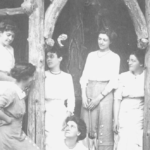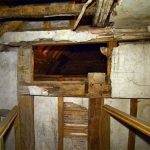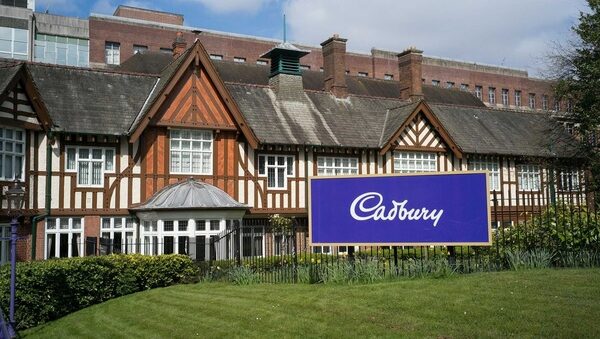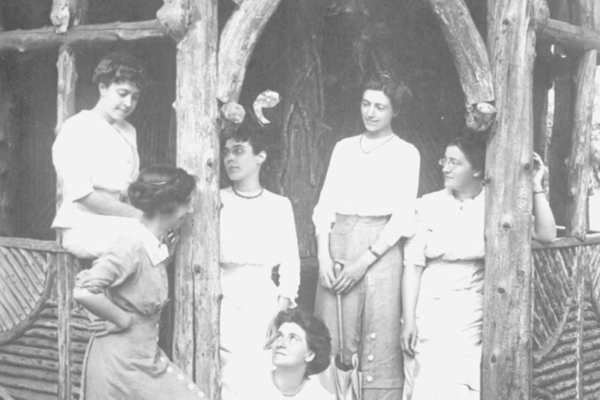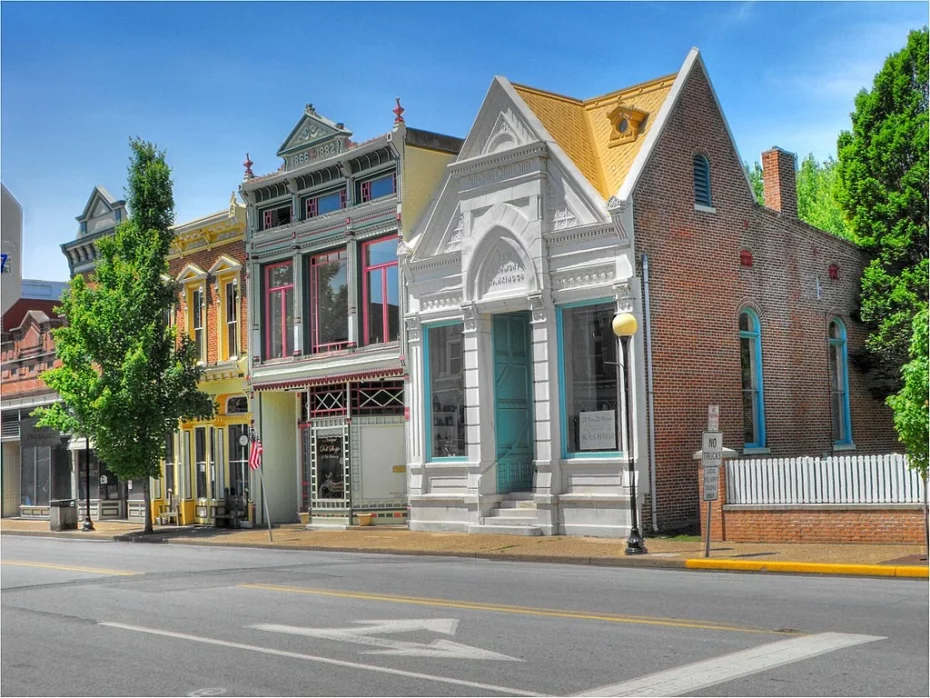
What put Southern Indiana on our radar? Mysterious utopian experiments and end-of-the-world 19th century religious cults of course! The beautiful historic town called New Harmony was once home to a esoteric doomsday group of German pioneers called the Harmonists, who had a taste for quirky architecture and kooky modern ideas like equal rights and free education. The community of artists, pacifists and idealists came for religious freedom, and also for the rolling hills, ripe for winemaking – naturally. The folks who founded this town had (mostly) pretty good intentions but it eventually all fell apart, albeit it not for lack of trying. While the utopian order is long gone, the town is still a curious place apart in Southern Indiana with a peculiar legacy. So let’s take a detour to find out why it’s worth a stop on your next cross country road trip.
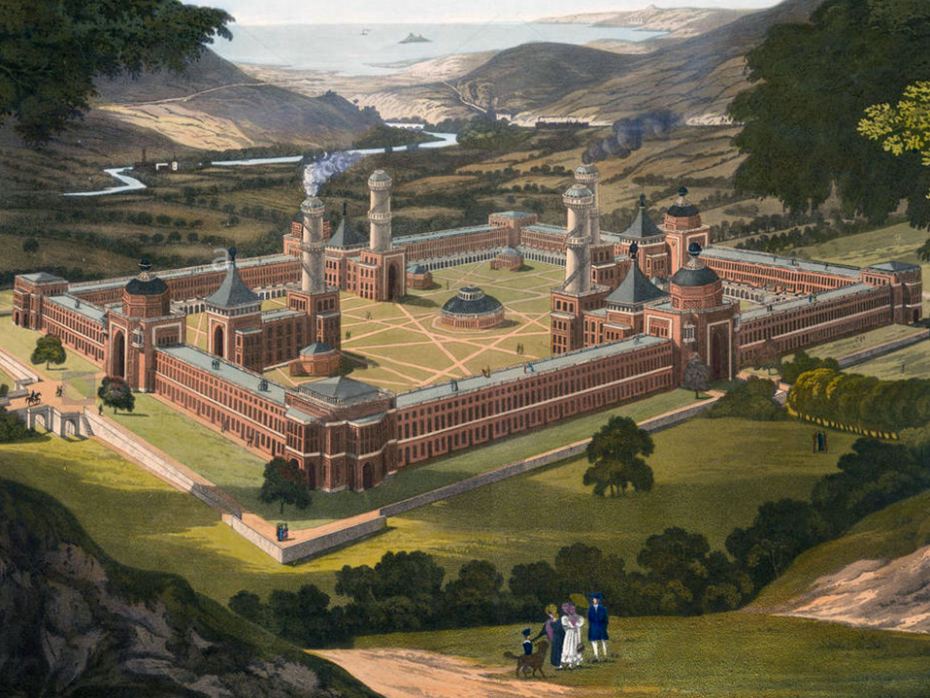
First off, what was (is) New Harmony? This quiet little township is located in the southwestern tip of the state, founded by the Harmonists in 1814, a group of German immigrants who boarded ships from Europe hoping to set up a colony free from religious persecution. Their original settlement in Pennsylvania, wasn’t doing so hot, so they headed west. They wanted waterways, good soil, and a hill for their vineyards. They wanted to be able to practice their religion (similar to that of Shakers) in peace and dreamed of expanding their manufacturing and agricultural work, advocating for celibacy while waiting for second coming of Christ. All marriages were dissolved by the community and as pacifists, they refused to join the army and believed that Napoleon was the antichrist. They also ignored the sound of a few red flags flapping in the wind along the way, like an enormous malaria outbreak their first year upon arriving in Indiana. Despite this, they did thrive, grow their crops and start manufacturing goods. Like any good leader of a religious sect, had a commanding presence that was strong enough to convince families to leave their homes and travel across oceans and plains to different settlements all in the name of “Harmony”. But alas, folks eventually got tired of their prophet, his tyrant ways and his empty promises for the imminent return of Jesus Christ. Rapp decided to move on and buy an even larger piece of land elsewhere.
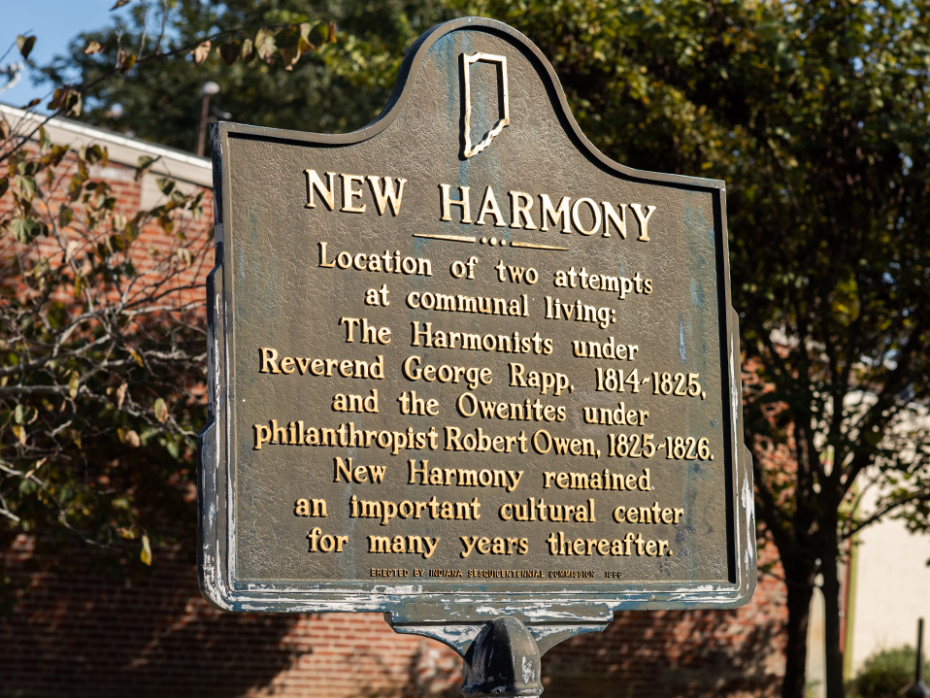
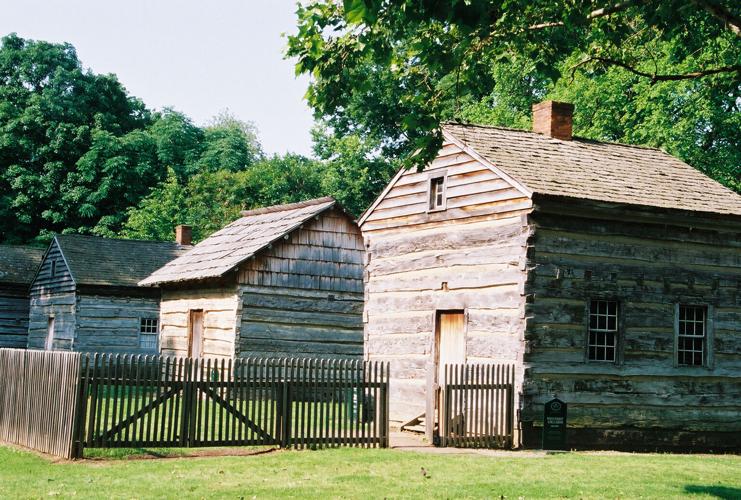
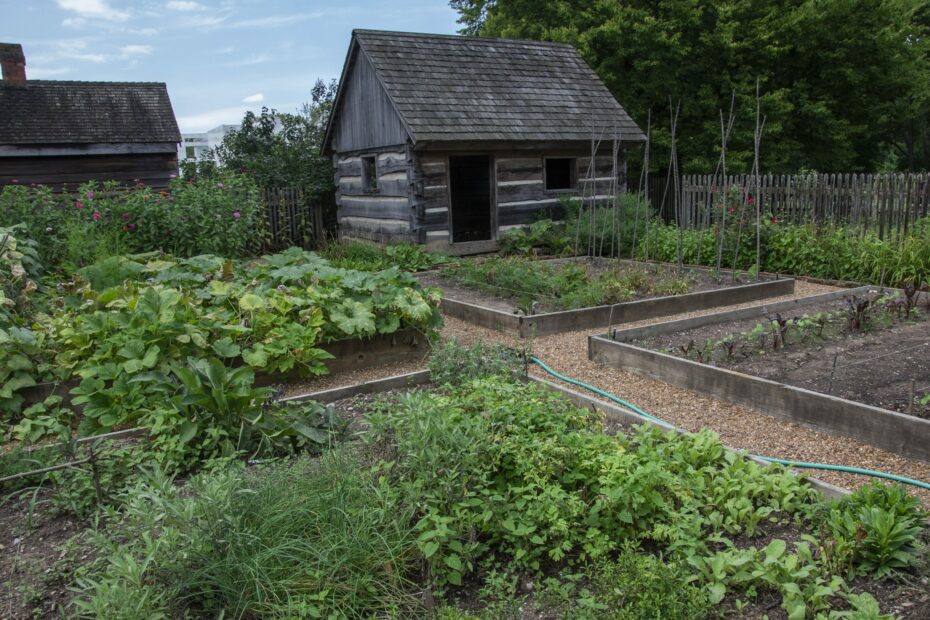
Enter Robert Owen in 1825. A rich British industrialist, idealist and anti-religious spiritualist, Owen dreamed of starting anew in the United States and steering this little community he had purchased towards his building his own exotic utopia. Think Disney’ ‘Tomorrowland’ of yore. Weary of the negative influences from the growing Industrial Revolution, Owen sought to encourage prosperity and happiness in his community through communal property, equal rights and education for all, as well as a strong emphasis on the sciences and the arts. The town became known as New Harmony under his leadership, but his socialist American dream would last only two years before breaking down again – people argued over land, money and community contributions. Owen had set up a system that relied on credit, rather than money. Community members received credits at the stores for the work that they did in farming and producing textiles. It wasn’t a terrible idea, but problems quickly arose. If someone chose not to work, they could just fall back on their own money to buy credits, which sort of negated the idea in the first place. But ultimately, the Harmonist’s commune failed because one one major problem: celibacy. And as any amateur cult leader knows, the best way to bring in new members is to breed your own.
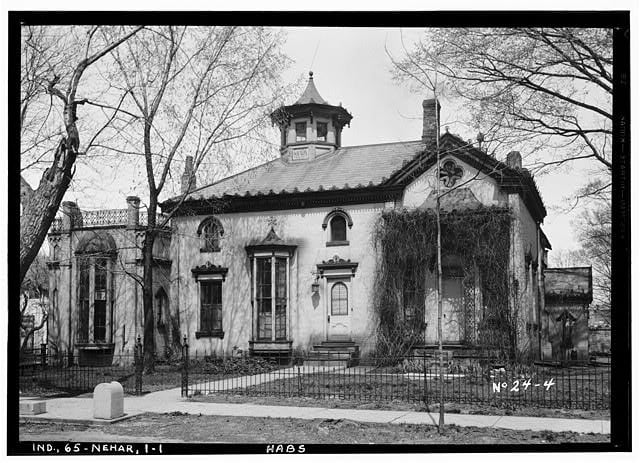
By 1827, New Harmony had dissolved and the land had been returned for private use. Ever the idealist, Robert Owen and his sons raised as much money as they could to pay off community debts and hang on to some of the land, but Robert was eventually went mad in his spiritualist endeavours trying to communicate with the dead. New Harmony still has a proud legacy of contributions to the arts and sciences, thanks to Robert Owen and his family’s work which led to changes in education, workers’ rights, women’s rights in America. Owen’s eldest son, Robert Dale Owen published the first American treatise in 1830 supporting birth control. He also advocated for women’s rights, public education, the abolition of slavery, and introduced the bill that established the Smithsonian Institution.
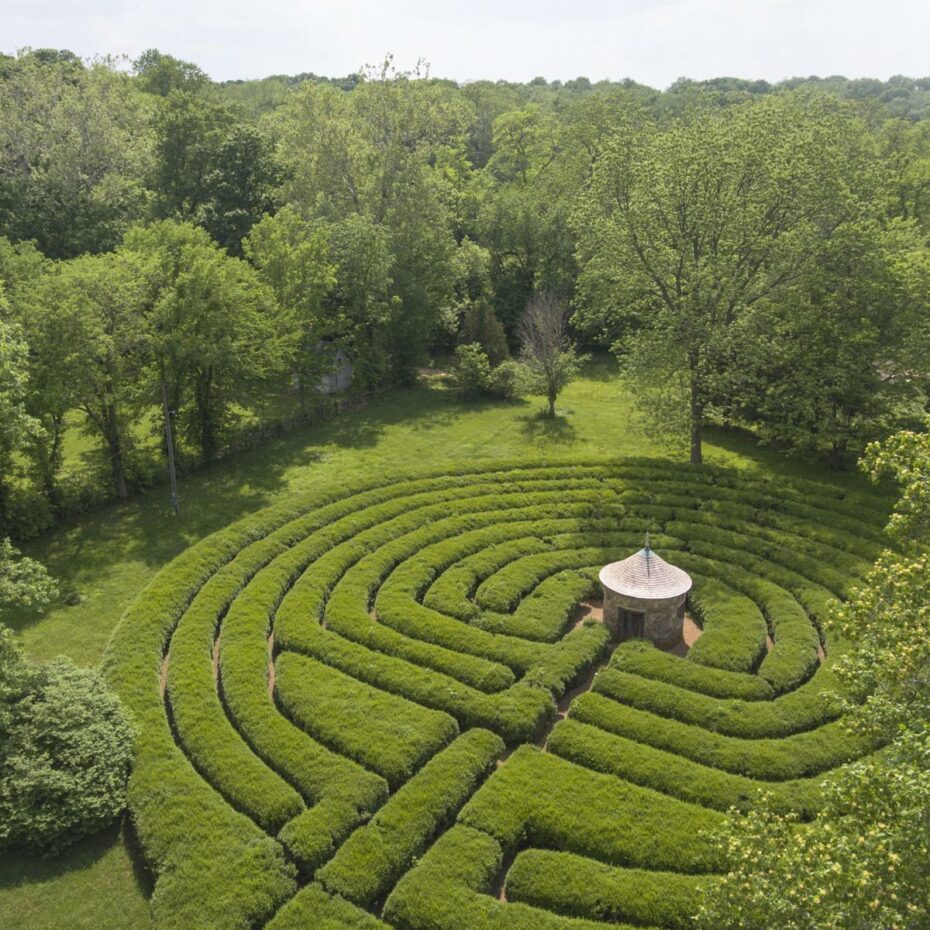
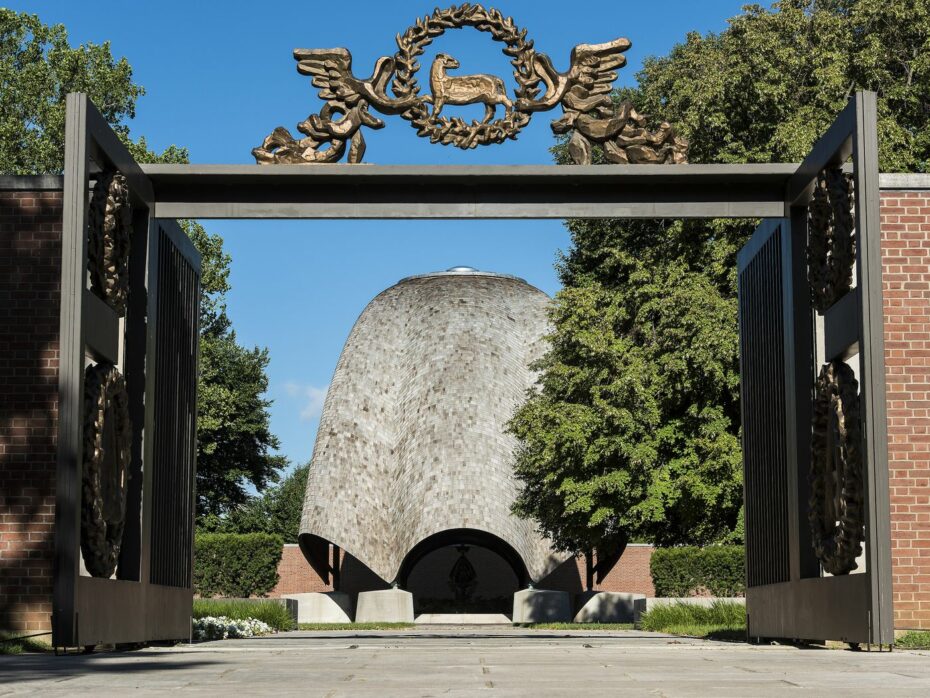
Today New Harmony is still alive in and thriving, albeit not quite in the way Robert Owen or even George Rapp may have intended, but the artisanal spirit lingers and there are quite few things to pique your interest. Firstly, New Harmony, particularly downtown New Harmony is really, really pretty. Many of the attractive Owen-era buildings are still standing in the New Harmony Historic District, which was listed on the National Register of Historic Places in 1966. You’ll also find two odd labyrinths originally designed and built by the New Harmony settlers, a roofless church commissioned by a descendent of Robert Owen and dedicated in 1960, an oddities museum and various unexplained religious symbols, including what some say are the footprints of an angel.
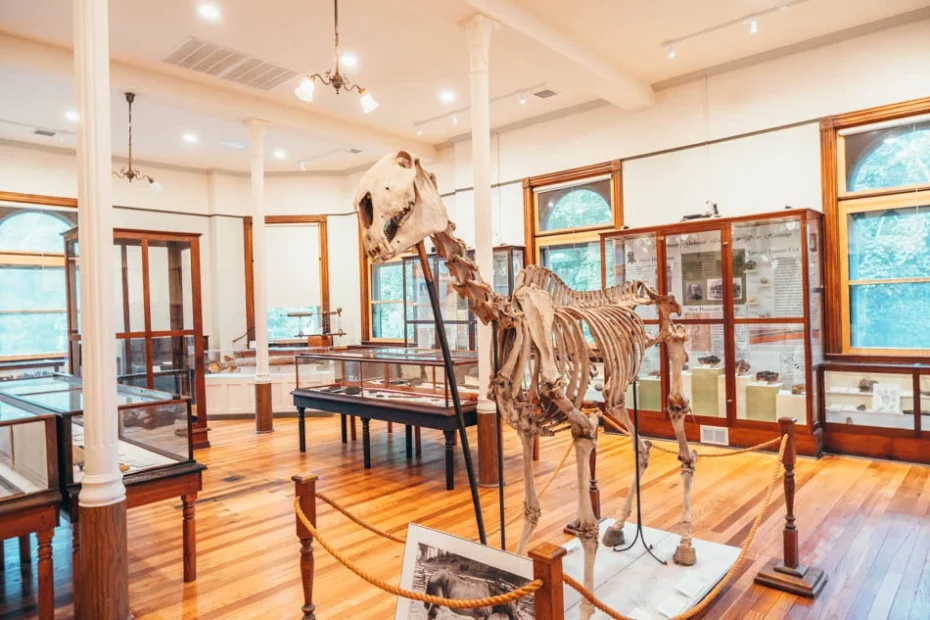
The Working Men’s Institute Museum and library, the oldest library in Indiana, is partly a memorial to the Utopian dream, housing a treasure trove curiosities collected by the last Harmonist leaders. You can also rent a golf cart from New Harmony Inn Resort & Conference Center to explore, but there’s one unexpected rule that visitors must adhere to in the town’s museums: no paranormal equipment allowed! There are guided walks of the town that include a chance to snoop inside the original Harmonists’ homes and their stunning gardens. Something worth noting here is that many Harmonist contemporaries were living in log cabins. The Harmonists were early adopters of pre-fabricated homes, and these larger clapboard houses. These types of houses focused on accommodating multiple family groups to encourage communal living. Every July, the town is host to a popular music festival and the antiques shopping is worth the stop alone.
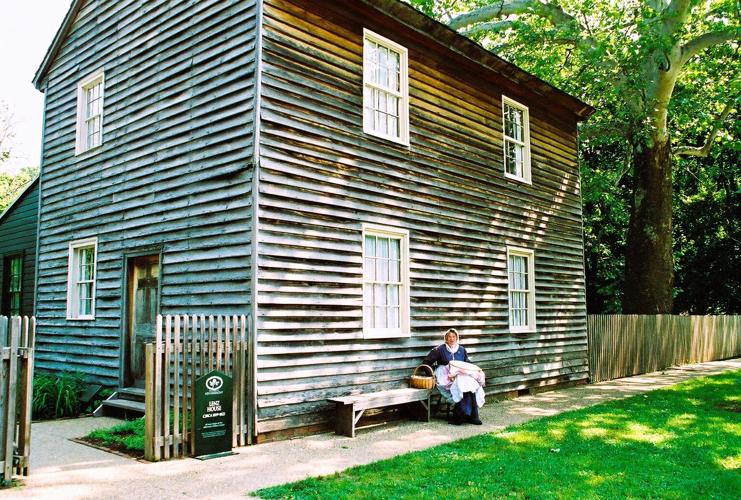
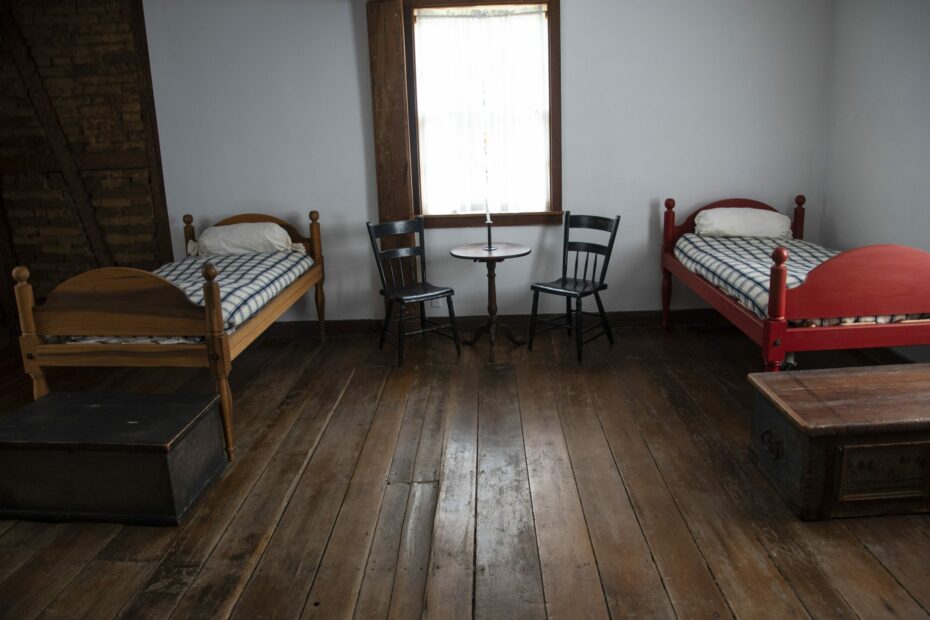
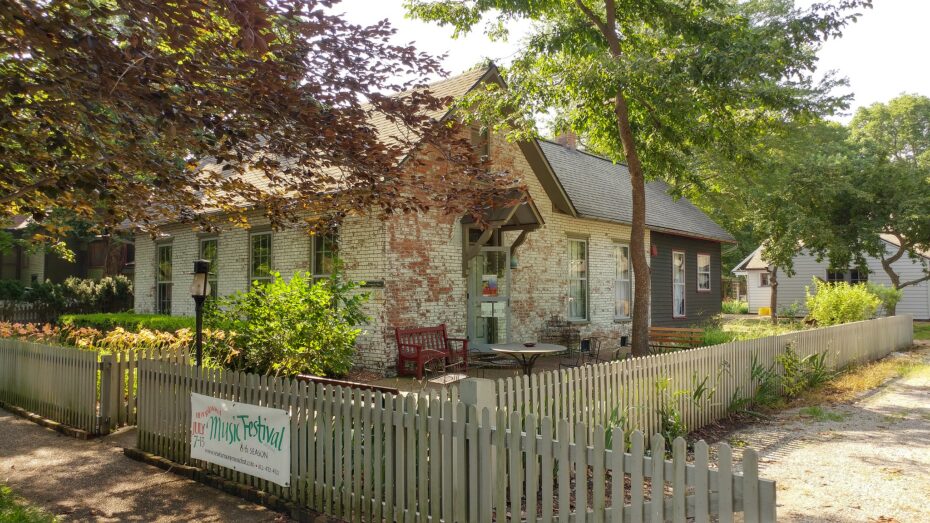
But you’ll likely need a place to stay. Might we suggest the charming New Harmony Inn? We’re all in for this cozy space in a historic town. The Inn boasts rooms and guest houses depending on the size of your party, as well as a delectable little in-house restaurant called The Red Geranium. Guests will find the style in keeping with the utopian pioneers; a simple, uncluttered-yet-comfortable approach to comfort. Thanks for coming along with us on this visit to New Harmony, the mysterious utopian experiment that put southern Indiana on the map.


